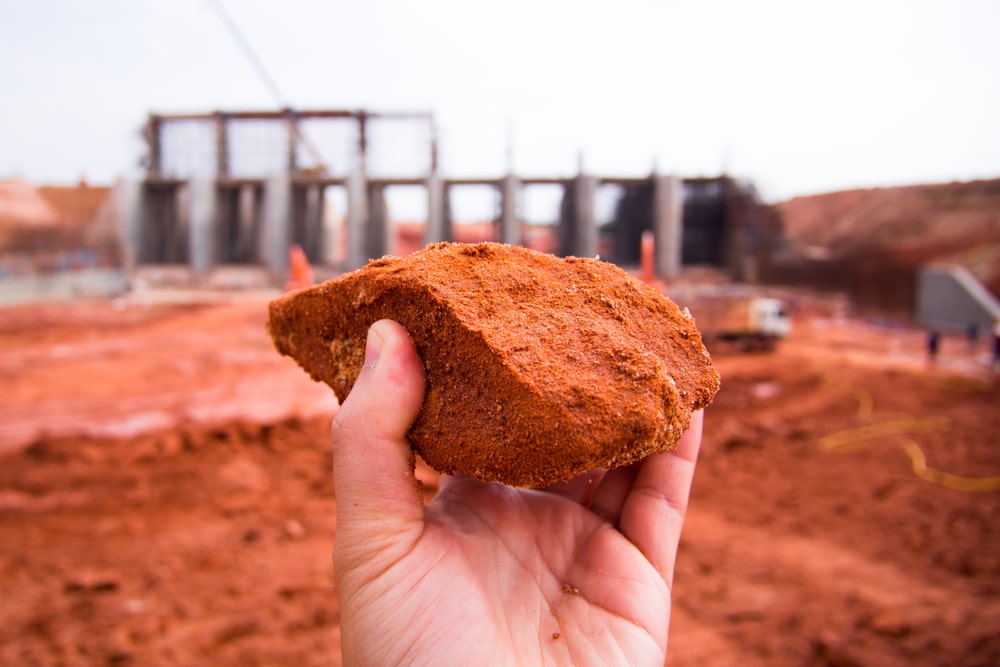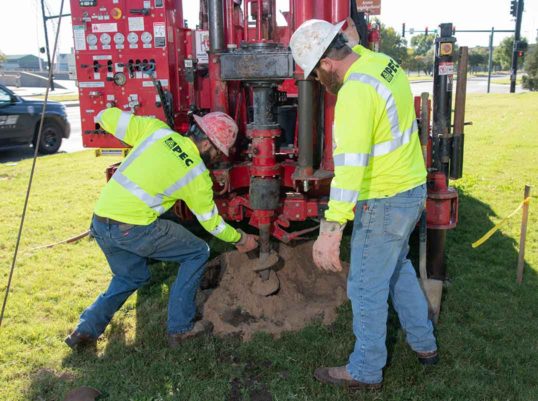A Thorough Summary of the Key Obligations of Geotechnical Designers in Site Characterization and Ground Renovation Methods for Design Solutions
Geotechnical designers are indispensable to the effective execution of engineering projects, tasked with the critical obligations of site characterization and the application of ground improvement techniques. Their work includes a thorough analysis of subsurface problems, employing various screening approaches to determine soil and rock homes.
Function of Geotechnical Engineers
Geotechnical engineers play a pivotal role in the layout and building and construction of facilities by analyzing the actions of dirt and rock below the surface - geo tech engineering. Their duties encompass evaluating subsurface conditions to educate style decisions that ensure architectural security and safety. By carrying out comprehensive analyses of dirt residential or commercial properties, including shear leaks in the structure, stamina, and compressibility, geotechnical designers give essential data that affects the selection of ideal building products and strategies
Along with examining dirt mechanics, geotechnical engineers are entrusted with identifying prospective threats such as landslides, sinkholes, and ground settlements. Their proficiency aids alleviate dangers linked with these geotechnical sensations, thus shielding both the atmosphere and public safety and security. They also collaborate carefully with various other design self-controls, guaranteeing that geotechnical factors to consider are incorporated right into general task design.
Moreover, geotechnical designers involve in the assessment of existing frameworks, giving recommendations for retrofitting and repair services when necessary. Their detailed understanding of soil-structure communication is vital for the development of lasting framework solutions. Generally, the duty of geotechnical designers is integral to the successful understanding of construction projects, ensuring they are risk-free, sturdy, and certified with governing criteria.

Website Characterization Processes
Efficient website characterization procedures are vital for recognizing the subsurface conditions that affect job design and implementation. Geotechnical engineers employ a systematic technique to gather, examine, and analyze data regarding groundwater, rock, and soil features. This procedure starts with a complete review of existing literary works and archaeological site data, providing insights into previous website problems and potential obstacles.

Information evaluation complies with fieldwork, where engineers make use of geostatistical techniques to analyze findings and develop geological models. Via persistent website characterization, geotechnical engineers lay the groundwork for successful job implementation, lessening unexpected complications and enhancing resource allotment.
Soil and Rock Testing Techniques
While comprehending subsurface conditions is crucial, the choice of ideal dirt and rock testing techniques is just as essential for precise evaluation and style. Geotechnical designers utilize a selection of screening methods to examine the mechanical and physical buildings of soil and rock products.
Research laboratory tests, such as Atterberg limits, grain size evaluation, and unconfined compressive strength examinations, provide essential information on dirt actions under various dampness conditions and packing situations. These tests assist establish soil classification and predict negotiation or shear toughness attributes critical for foundation layout.
In-situ screening approaches, including Standard Infiltration Examinations (SPT), Cone Infiltration additional hints Examinations (CPT), and stress meter tests, allow engineers to gather data straight from the ground. These techniques supply valuable insights right into the dirt's thickness, uniformity, and stratification without the requirement for substantial sampling.
Rock screening commonly entails core tasting and lab analysis to assess properties like uniaxial compressive toughness and rock high quality designation (RQD) Together, these soil and rock screening techniques enable geotechnical engineers to make educated decisions pertaining to site-specific difficulties, ensuring the security and stability of engineering remedies.
Ground Renovation Techniques
Ground renovation methods are important for improving the design properties of soil, consequently enhancing its load-bearing ability and minimizing settlement. These methods are essential in dealing with obstacles presented by weak or troublesome soils, which can dramatically affect the security and toughness of structures.
Numerous ground renovation techniques are employed, including compaction, grouting, and soil stabilization. Grouting, on the various other hand, entails infusing a fluid product right into the ground to fill voids and enhance dirt communication.
Dirt stablizing includes a series of methods, from chemical additives to mechanical treatments, aimed at enhancing the dirt's resistance to erosion and deformation. Techniques such as lime stabilization or cement blending modify the properties of the soil at a particle level, boosting its overall performance.
Value of Geotechnical Assessments
Geotechnical evaluations play a vital duty in the preparation and layout of engineering tasks, as they give essential information regarding the subsurface conditions. Recognizing soil buildings, rock developments, groundwater degrees, and prospective geohazards is vital for ensuring the stability and security of frameworks. These evaluations enable designers to make enlightened choices concerning website choice, style specifications, and construction techniques.
The significance of geotechnical assessments extends past preliminary task phases; they contribute in danger management and expense performance. By determining prospective issues early, such as dirt negotiation, slope instability, or excessive groundwater, designers can develop ideal reduction strategies, reducing the probability of costly delays and architectural failures. Additionally, these assessments sustain conformity with governing requirements and boost the sustainability of design techniques.

Final Thought
Finally, geotechnical designers are important to ensuring the safety and stability click over here now of design projects via extensive site characterization and ground improvement strategies. geotechnical industry. Their systematic technique to analyzing subsurface conditions, incorporated with their suggestions for reliable ground adjustment, substantially enhances soil buildings and load-bearing capability. The competence of geotechnical engineers not just facilitates educated task planning but likewise ensures compliance with guidelines and fosters reliable communication among stakeholders, inevitably contributing to successful engineering results
Geotechnical engineers play a critical role in the style and building and construction of infrastructure by assessing the behavior of soil and rock underneath the surface area. By carrying out detailed see post analyses of soil homes, consisting of shear permeability, toughness, and compressibility, geotechnical engineers supply essential data that influences the option of appropriate building materials and strategies.
In enhancement to analyzing soil mechanics, geotechnical designers are tasked with identifying potential risks such as landslides, sinkholes, and ground settlements. Geotechnical designers employ a systematic approach to collect, review, and translate data concerning rock, groundwater, and dirt qualities. By determining prospective problems early, such as soil negotiation, slope instability, or excessive groundwater, engineers can devise appropriate reduction techniques, reducing the likelihood of architectural failures and pricey hold-ups.